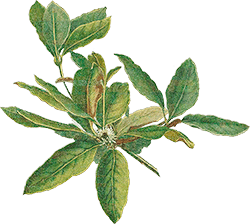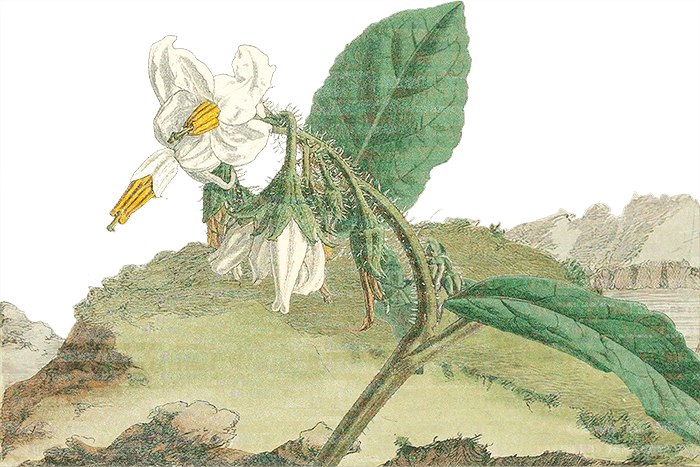On today’s show we learn about the Maxwell’s Grevillea, a critically endangered flowering shrub native to the far southwest of Australia roughly 25 miles from the southern coast.
For more information about the conservation and protection of Maxwell’s Grevillea please visit the Government of Western Australia’s Department of Biodiversity, Conservation and Attractions at https://dbca.wa.gov.au/.
Rough Transcript
Intro 00:05
Welcome to Bad at Goodbyes.
On today’s show we consider the Maxwell’s Grevillea
Species Information 02:05
The Maxwell’s Grevillea is a critically endangered flowering shrub native to the far southwest of Australia roughly 25 miles from the southern coast.
Description
It is a low-lying shrub with a prostrate growth form generally only reaching heights of one to three feet, but spreading up to five feet in width.
It is an evergreen shrub with spiny needle-like leaves.
Its flowers are strange and beautiful, growing in dense toothbrush inflorescences. So these are flower clusters that grow from the ends of branches, on just one side, so like toothbrush bristles. Each flower has a very elongated style, the style is the tubular part of the pistil, the female reproductive organ; it connects the stigma (where pollen lands) to the ovary (where seeds develop). The flowers are clumped together and the many long styles give the inflorescences a kind of looping tangled spidery appearance. And they are a striking rich pinkish reddish color, with a soft furry texture.
These elongated styles are thought to be an adaptation for pollination. They help to attract pollinators and facilitate pollen transfer. The extended styles increase the likelihood of contact with pollinators, enabling pollen transfer and subsequent fertilization.
Reproduction
A 2017 study suggests that the Maxwell’s Grevillea is likely pollinated by birds, particularly honeyeaters, attracted to the flowers’ nectar. Mammals may also play a role in pollen dispersal and transfer. The flowers are produced in August and September.
Once pollinated, the flowers develop into woody follicles, a dry single cavity fruit, with a hardened (woody) fruit wall that provides protection for the seeds.
Maxwell’s Grevillea is an obligate seeder, meaning seed release is fire-adapted. Here’s how it works: the fruit remains closed, protecting their seeds, even when mature. Then, in the presence of fire (specifically smoke and high heat) the fruit opens releasing the seeds onto the ground, and into favorable conditions for seedling success. Fire has cleared away competing vegetation, opening the canopy to sunlight, and releasing nutrients into the soil.
The seeds themselves are also stimulated by fire cues, remaining dormant until the presence of heat or smoke initiates germination.
Maxwell’s Grevillea has a relatively long juvenile period, growth from new seedling to reproductive flowering can take as long as 4 years.
Habitat
Maxwell’s Grevillea is native to southwestern Australia, in the Western Australian province, where it grows in the Pallinup River area, east of the Stirling Ranges, roughly 200 miles southeast of Perth and 25 miles from the Southern Ocean, the south coast of the Australian continent. It grows hilltops, near rocky outcrops, near the Pallinup River, in shallow, loamy soil over granite.
This is the Esperance Plains, a bioregion with heathlands, woodlands, and mallee scrub habitats and a Mediterranean climate, with hot, dry summers and cooler winters. This is an arid and drought and fire prone region. Summer temperatures reach into the low 90s°F, and winter dips into the 40s°F. Rainfall is relatively low, averaging roughly 19 inches per year.
The Maxwell’s Grevillea shares its habitat with Western Whipbird, Wedge-Tailed Eagle, Mealy Gum, Honey Bush, Common Net Bush, Rock Sheoak, Honeypot Dryandra, Brown Falcon, Legless Lizard, Willow Myrtle, Western Grey Kangaroo, Blue Tinsel Lily, Motorbike Frog, Red-Capped Parrot, Spiny Anteater, Bitter Pea, Broom Honeymyrtle, Honey Possum, Southwestern Carpet Python, Bobtail Skink, White Myrtle, Nodding Blue Lily, and many many more.
In The Dream
————
In the dream,
to once again be a fire revering being. In my species it often seems to go like this: awe and fear are bent into subjugation and the subjection is obscured and over time all is forgotten - a wolf is feared then tamed then bred and bred until there is no wolf in little macaroni’s whimper, and I love her sweet loyalty but remember no awe for her animal heart. Fire was harnessed: flint, match, lighter, compressed into the engines of our vehicles, invisible, perhaps seeming impotent. Until of course it escapes, claiming California forests, an apartment in the bronx, and we remember to fear again. In the dream, I want to keep it all present, to see the wolf inside the dog, the fire inside the factory, to know awe and fear and ask for mercy and forgiveness.
In the dream.
————
Threats
The primary current threat to Maxwell’s Grevillea is habitat degradation from human introduced weed invasion. Weeds compete with the Grevillea for resources. And they increase grazing pressure, as more less nutritious or desirable weeds overpopulate the habitat, native herbivores will increasingly turn to the Maxwell’s Grevillea for substance, risking overgrazing. Abundant weeds also increase fire hazard due to their easy ignition.
Changes in precipitation patterns and wildfire frequency and severity are a longterm threat. Human induced climate change is resulting in increased drought which reduces flowering, viable germination, and increases adult mortality. And because Maxwell’s Grevillea seeds are fire released: infrequent fire suppresses germination and
too frequent fire does not allow seedlings to reach reproductive maturity.
Conservation
Though protected in Australia as “Rare Flora”, most of the Maxwell’s Grevillea occurs on privately held, unmanaged and unprotected land. That said, 5 populations have been fenced to keep out grazing livestock.
Roughly 1500 seeds have been collected and are safely stored at the Western Australia Threatened Flora Seed Centre. And the Botanic Garden and Parks Authority have over 30 individuals growing in offsite cultivation.
Nevertheless the Maxwell’s Grevillea has been considered critically endangered on the IUCN Red List since 2020 and their population is currently in decline.
Our most recent counts estimate there are less than 700 Maxwell’s Grevillea in the wild.
Citations 15:49
Information for today’s show about the Maxwell’s Grevillea was compiled from:
Department of Conservation and Land Management; Western Australian Threatened Species and Communities Unit Interim Recovery Plan. 2001-2004. Robyn Phillimore, Diana Papenfus, Felicity Bunny & Andrew Brown – https://library.dbca.wa.gov.au/static/Journals/080548/080548-91.pdf
IUCN – https://www.iucnredlist.org/species/113031415/113308246
“Population demography and seed bank dynamics of the threatened obligate seeding shrub Grevillea maxwellii McGill (Proteaceae)”. Barrett, S.R. & Cochrane, Anne. (2007). Journal of the Royal Society of Western Australia. Vol 90. 165-174. – https://www.researchgate.net/publication/286963994_Population_demography_and_seed_bank_dynamics_of_the_threatened_obligate_seeding_shrub_Grevillea_maxwellii_McGill_Proteaceae
“Seedling survival, soil seed bank status and disturbance response of the critically endangered Grevillea maxwellii McGill (Proteacee)”. Anne Cochrane, Sarah Barrett. Final Report to Bankwest Landscope Visa Conservation Card Trust Fund. Western Australia Department of Conservation and Land Management. February 2003 – https://library.dbca.wa.gov.au/FullTextFiles/021526.pdf
“Threatened plant translocation in Australia: A review,” J.L. Silcock, C.L. Simmons, L. Monks, R. Dillon, N. Reiter, M. Jusaitis, P.A. Vesk, M. Byrne, D.J. Coates. Biological Conservation, Volume 236, 2019, Pages 211-222 – https://doi.org/10.1016/j.biocon.2019.05.002
Wikipedia – https://en.wikipedia.org/wiki/Grevillea_maxwellii
For more information about the conservation and protection of Maxwell’s Grevillea please visit the Government of Western Australia’s Department of Biodiversity, Conservation and Attractions at https://dbca.wa.gov.au/.
Music 17:50
Pledge 25:09
I honor the lifeforce of the Maxwell’s Grevillea. I will commit its name to my record. I am grateful to have shared time on our planet with this being. I lament the ways in which I and my species have harmed and diminished this species. I grieve.
And so, in the name of the Maxwell’s Grevillea I pledge to reduce my consumption. And my carbon footprint. And curb my wastefulness. I pledge to acknowledge and attempt to address the costs of my actions and inactions. And I pledge to resist the harm of plant or animal kin or their habitat, by individuals, corporations, and governments.
I pledge my song to the witness and memory of all life, to a broad celebration of biodiversity, and to the total liberation of all beings.

